A couple of Wednesdays ago, after Divine Service in the undercroft chapel of a large downtown church, I snuck past a velvet rope with little brass clips on the ends to climb a staircase I know very well but haven’t climbed for a long time.1
My husband was the choir director at this church for many years, and this is where we met, were married, and brought our daughter to be baptised. We have belonged to four congregations in two different states since we were members there, but this church has always felt like home in ways that later congregations have not.
Long after we’d left, I returned to sing with a massed choir here in 2017 for the 500th anniversary of the Reformation (it is a Lutheran church). A few months later, in spring of 2018, the church suffered a terrible fire.
Throughout the day of the fire, I prayed that the north bell tower would not fall. I was so worried about the safety of the dozens of firefighters fighting the four-alarm fire and could not imagine the three great bells, bells that I’ve climbed the tower to see, crashing to the ground.
The north bell tower stood, but the smaller south tower, the one that rose over the small balcony room that my husband used as a choir office, fell.
The rededication of the sanctuary was at the end of May, and unfortunately, we missed it. This particular Wednesday’s visit more than sufficed, though, as I had a few minutes to walk around while John attended to some issues with the pipe organ. I was glad for the time to simply be alone in a place that is very dear to me, my belly full of gratitude.
I climbed the next set of stairs. I’ve been up this next set of stairs before, too, most notably on my second date with John, nearly 30 years ago.
Do you see the new sprinkler system pipes?
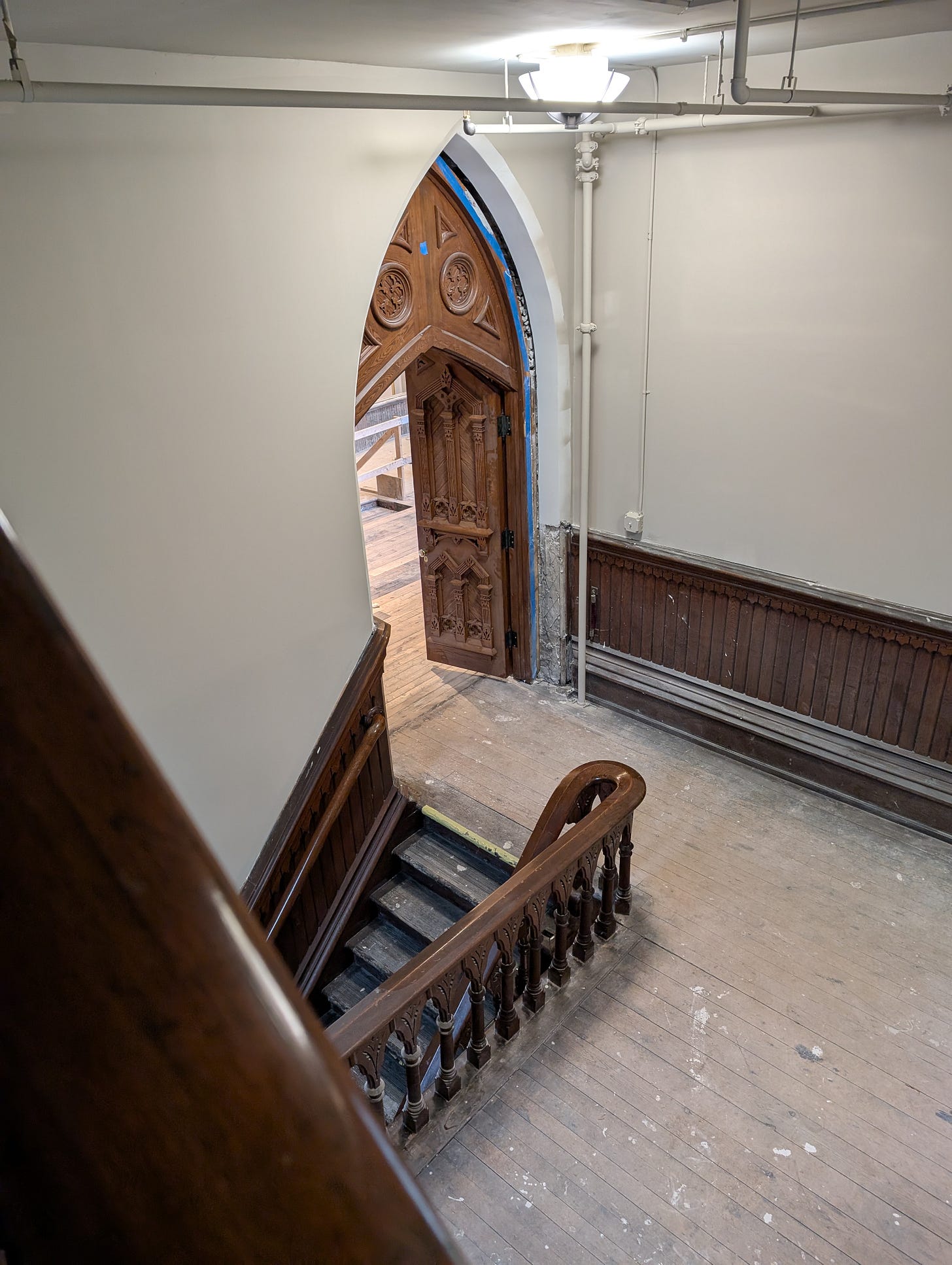
At one level above the balcony is a much more utilitarian door. Because John had also served on various boards of the church, he once knew the combination for this lock.
Was the combination the same after all this time? It was.
I have never been so happy to see ugly retro-fitted black plumbing pipes in a historic building as I was to see one here, beside this door below the bell tower.
I particularly wanted to climb up to this level because of the history that exists on the back of this wall, something that I am very glad the fire did not consume.
There is also less serious graffiti on this wall. Small boys do not change much over time!
On our second date, back in 1995, John took me into the attics, an immense space full of enormous oak beams between the steeply pitched outer roof and the arched inner ceiling. On our date back then, we also climbed the ladders up to the level where the bells are, several levels above this level:
Our time was limited, it was getting late in the evening, and I did not want to keep the organist waiting for us, but as quickly as I dared, I climbed up one more level, this time via a glorified ladder —still more sturdy than many a new staircase— to the second level above the balcony.
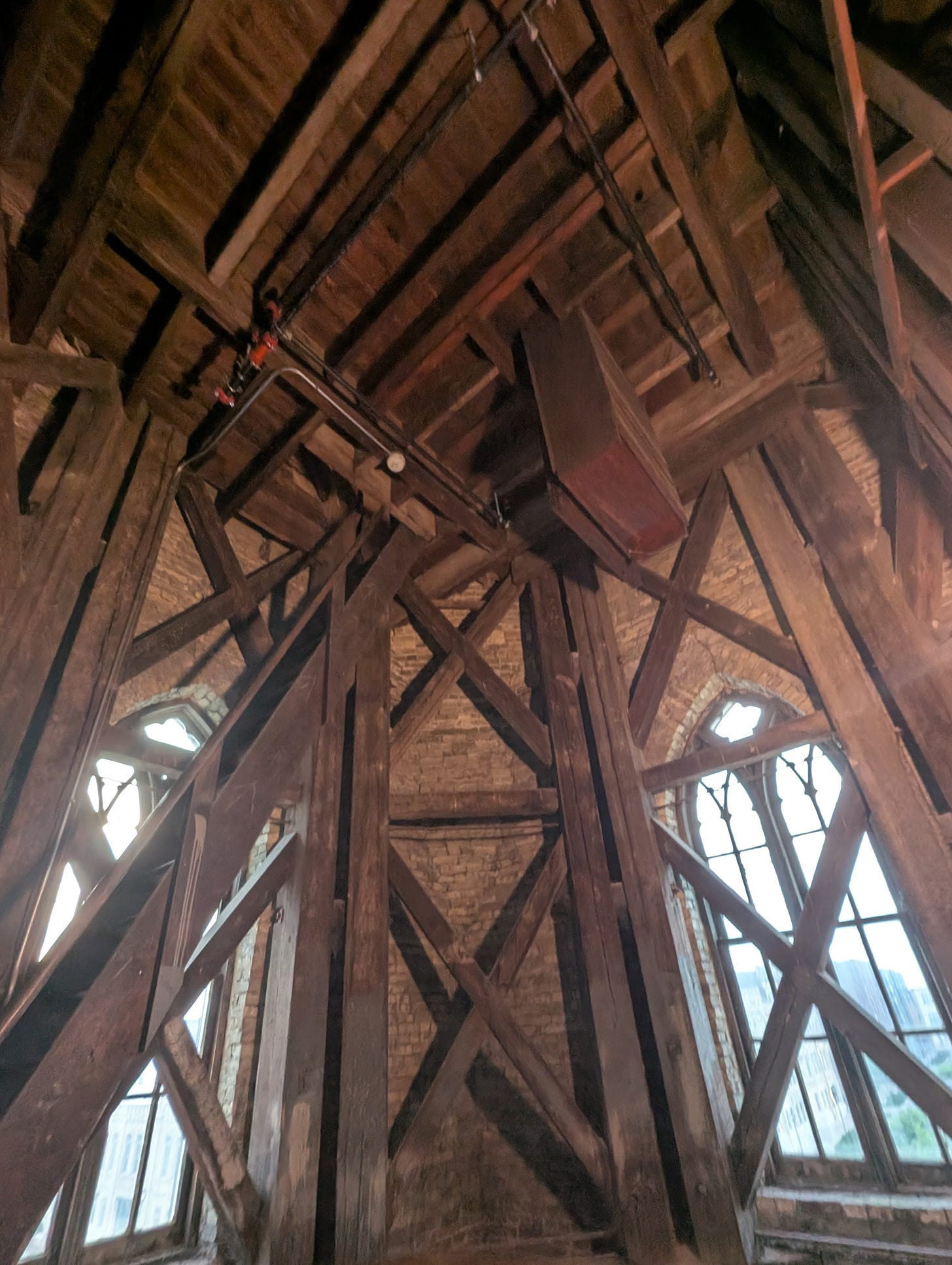
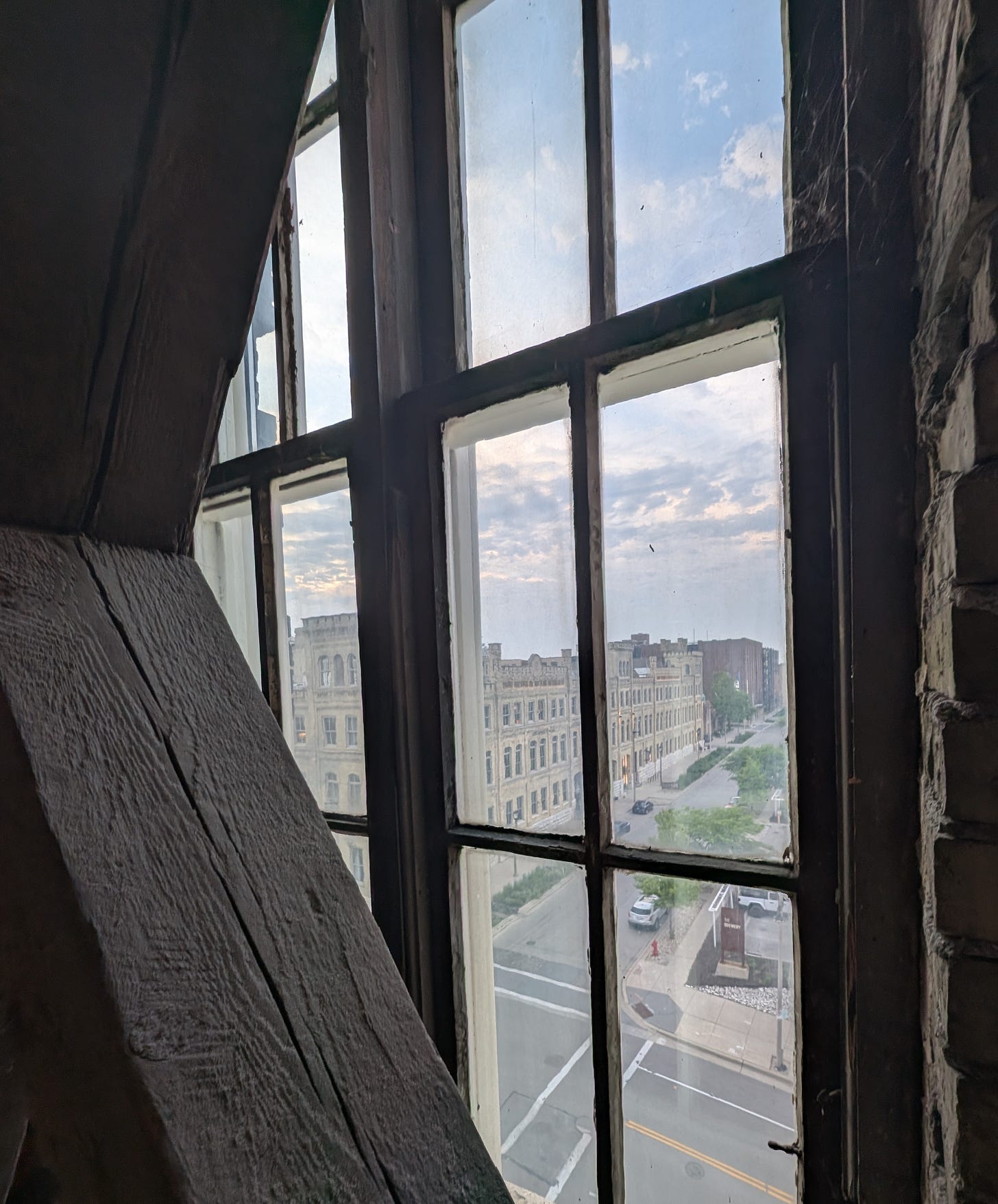
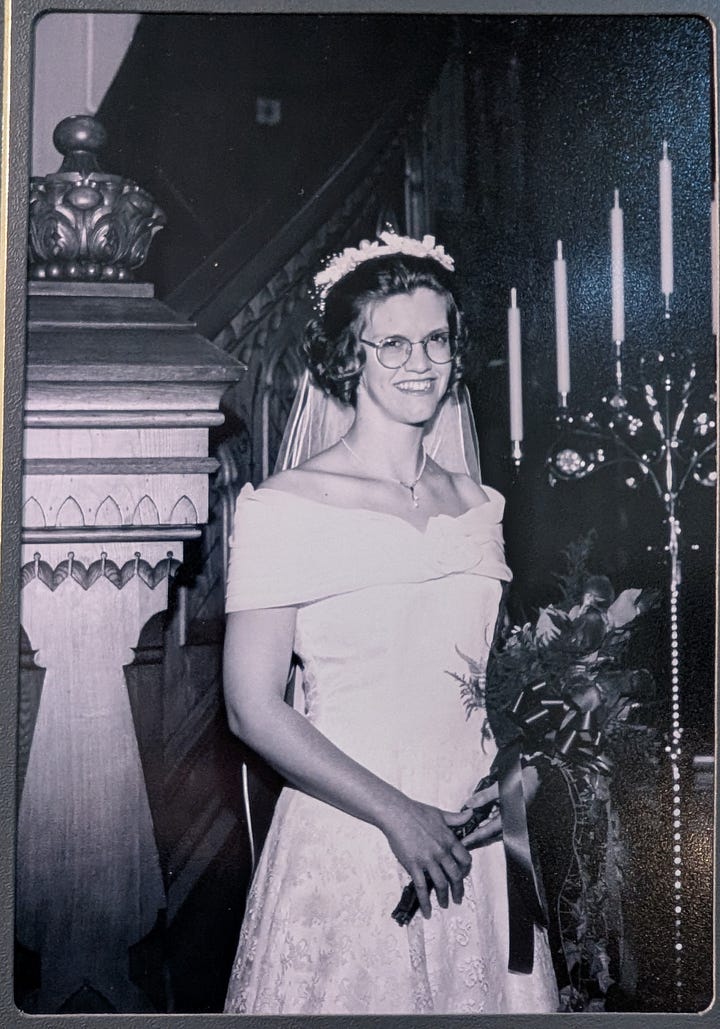
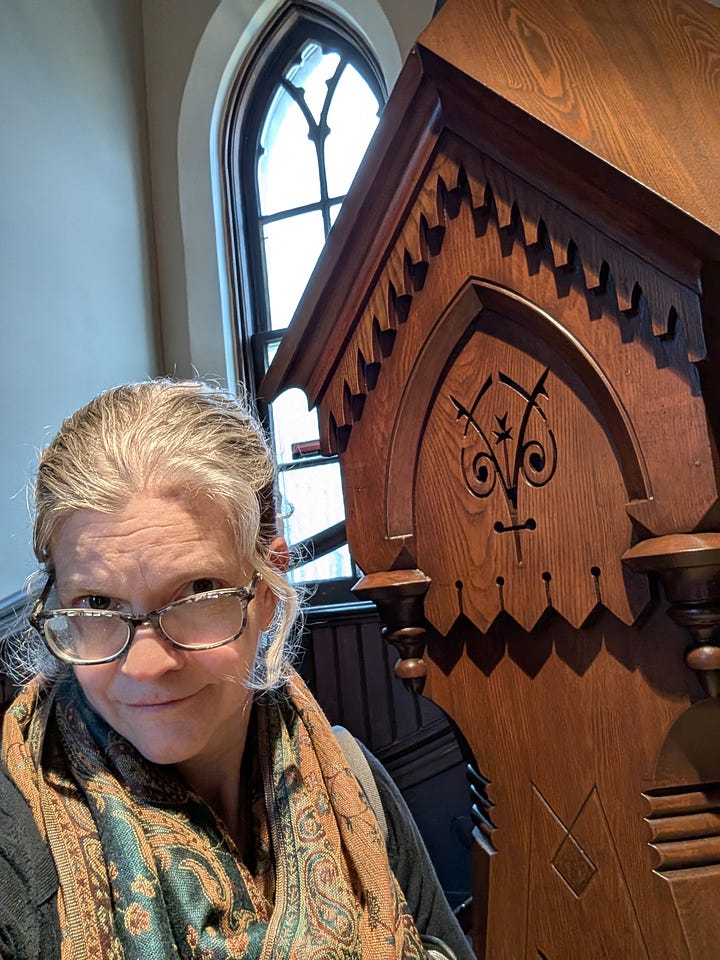
There is much work to be done in the years to come, and I hope many will continue to contribute to the ongoing work. Trinity’s 200-foot spire is part of the downtown Milwaukee landscape, and the building is on the National Register of Historic Places for its extensive carved ash and oak woodwork, German immigrant craftsmanship, and iconic Cream City brick. Trinity was the first Lutheran congregation in Milwaukee to integrate racially, in 1949, and it remains a diverse congregation today.
The interior restoration contractors have restored the stenciling and paint colors to the original schemes, rather than to the colors and designs at the time of the fire. I love the deep blue chancel ceiling, complete with heavenly stars.
Still to come: more stained glass, ash wainscotting throughout the entire building, the restoration of the oak pews. And, Lord willing, someday: a new pipe organ to fit the space, as the fire utterly destroyed the 1879 Schuelke pipe organ that was in the balcony, on which this hymn tune was composed by a previous organist of the congregation. Read about some of the incredible puzzle-solving work that the craftsmen at a West Allis woodshop did in the process of restoring the altar, reredos, pulpit, and lectern, and how some of the damaged pews were repurposed into fittings for the undercroft chapel.
Why the liturgical and ecclesiastical arts matter is subject for a different post, and a more thoughtful one. For now I will simply state emphatically that they do matter. While it is true that “the church” is invisible, sustained by God himself, and far more than “just a building,” the beauty, craftsmanship, and care we pour into the sensory aspects of our worship spaces is an offering of beauty and peace in the name of Christ to a world come undone in chaos and ugliness.
"Come unto me, ye weary, and I will give you rest." O blessed voice of Jesus, which comes to hearts oppressed! It tells of benediction, of pardon, grace, and peace, of joy that hath no ending, of love which cannot cease. —W. Chatterton Dix, b. 1837
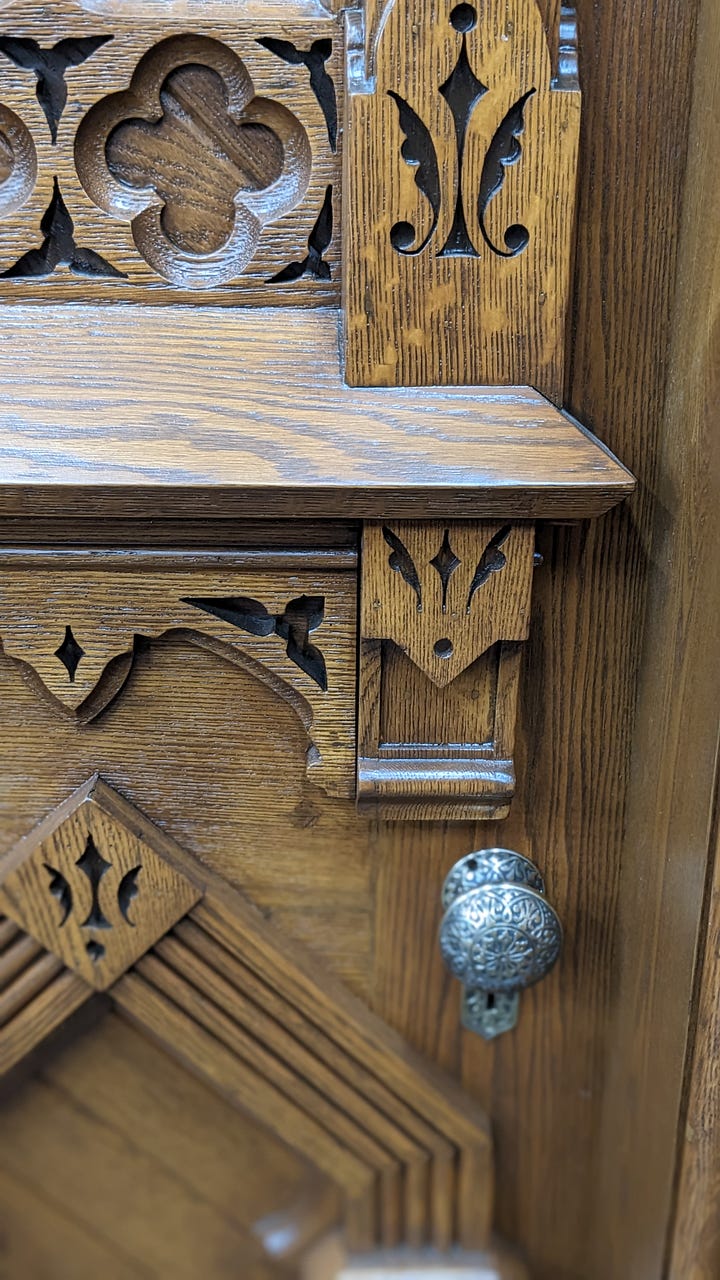
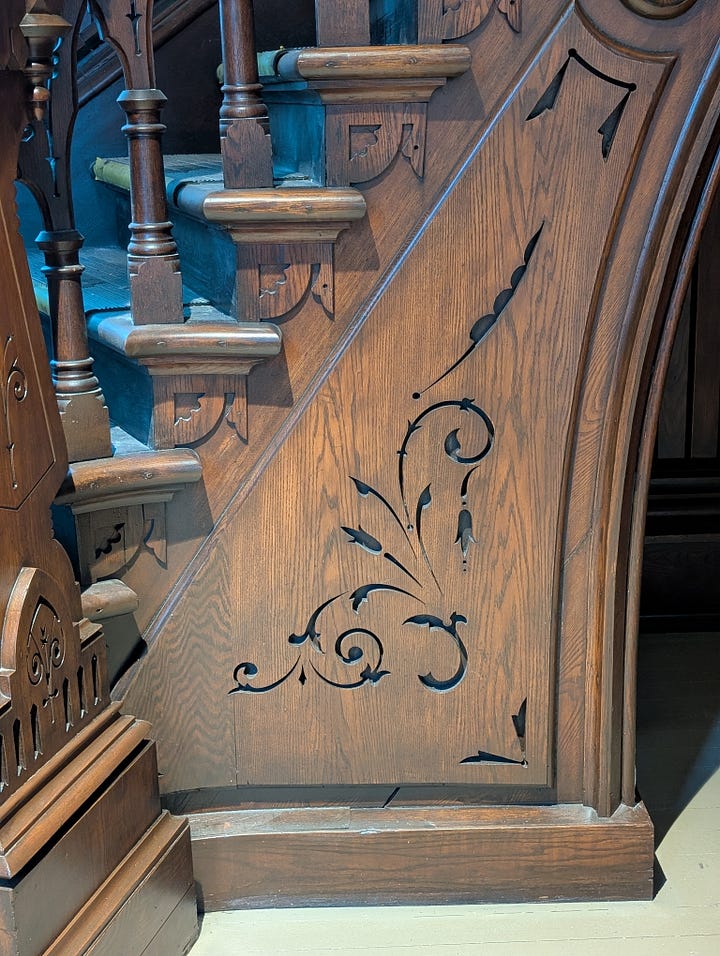
Although we ducked under the rope, I respectfully ask that no readers who visit do so. The stairs are, as you can see, rather unconventional. A choir member of my husband’s once took a tumble ahead of him, and he reached out for her but failed to stop her fall. (Thankfully, she was okay, but it was a scary fall!) The main balcony, even before the fire, had a rather low railing, one that certainly does not meet modern building codes, and at the moment, the balcony is still under (re)construction; not all of the railing and fitments are back in place. The balcony and upper levels are not a place (yet!) for visiting!

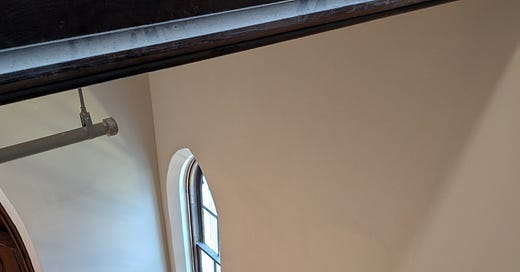



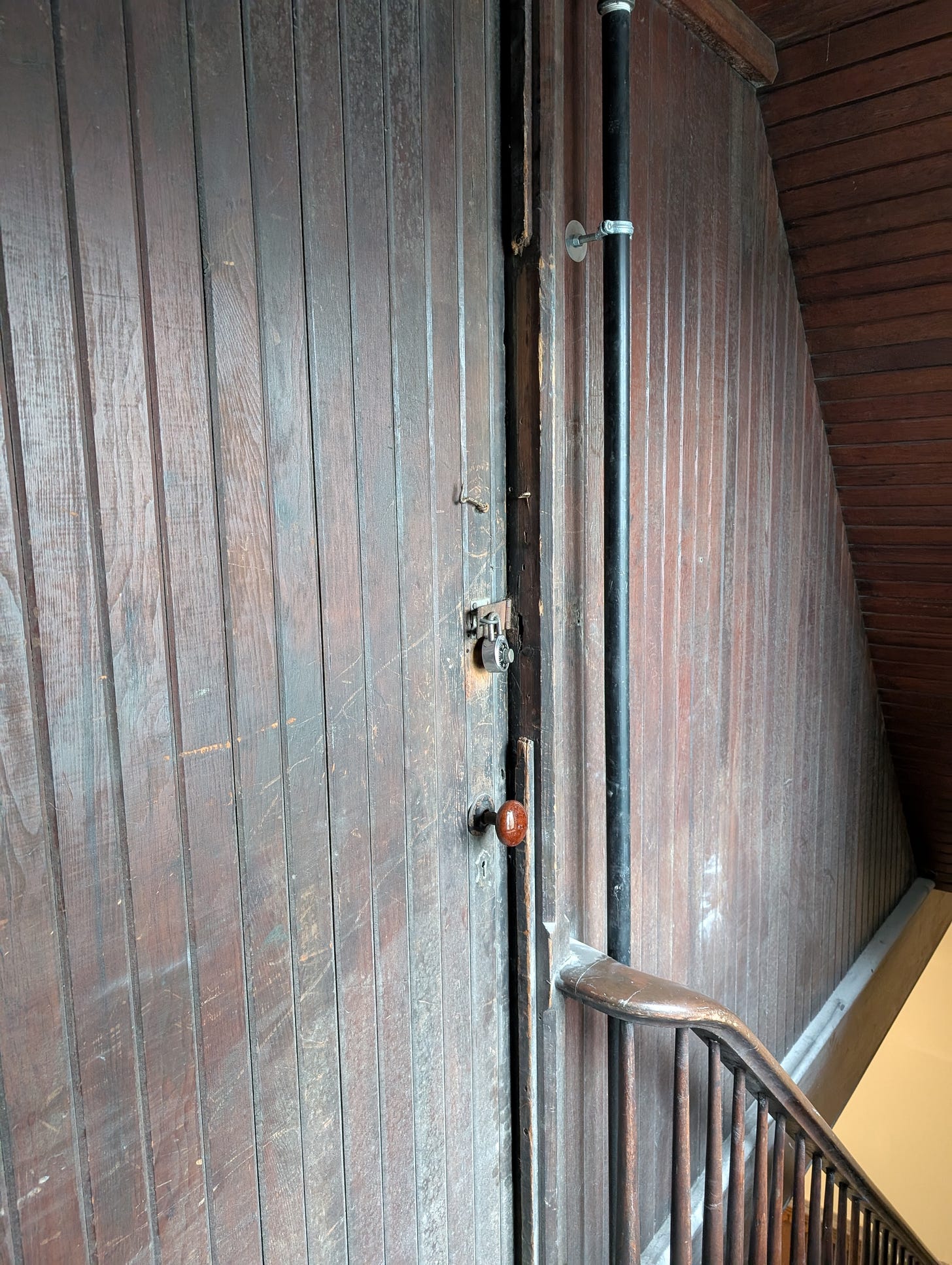
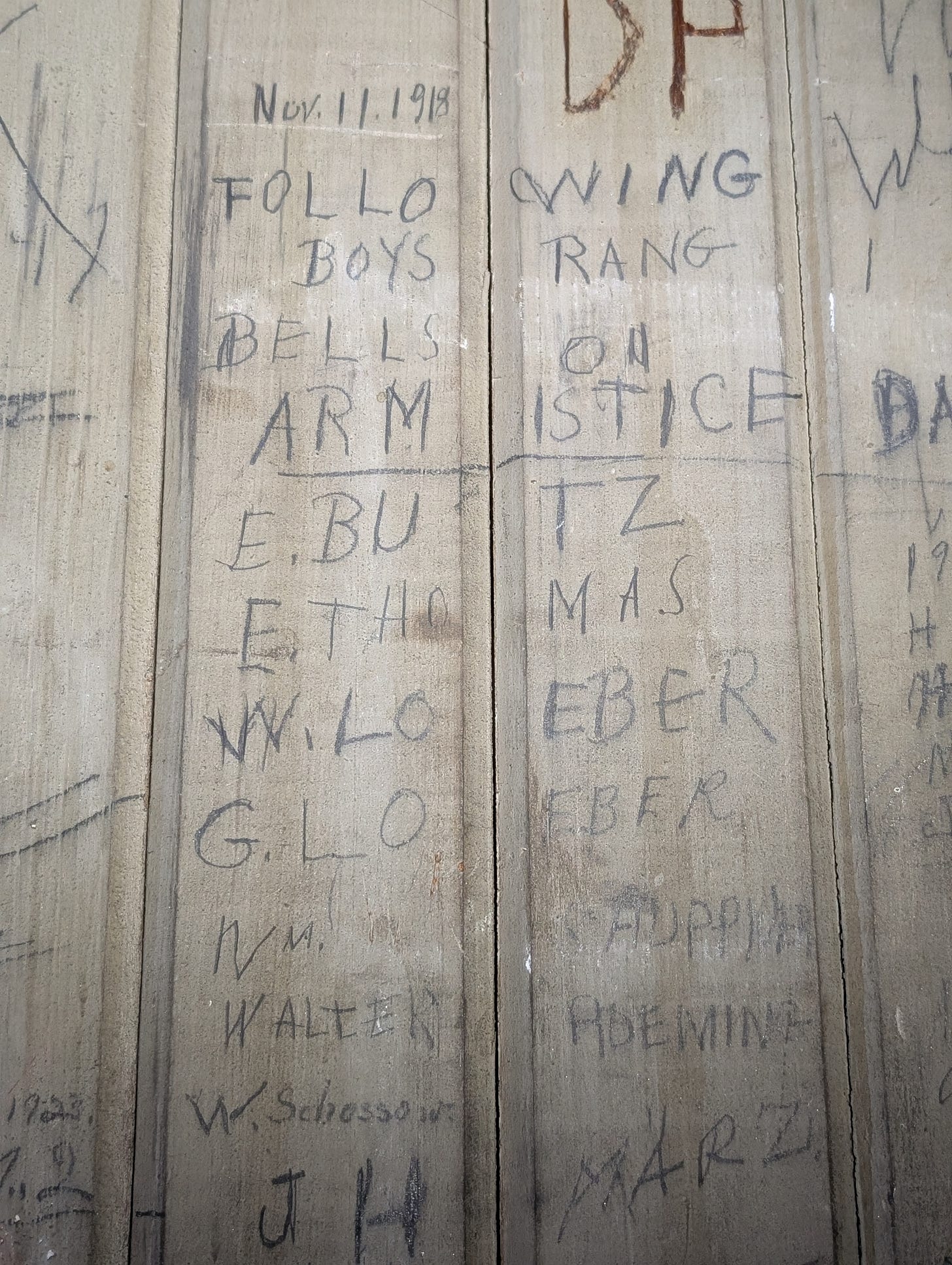

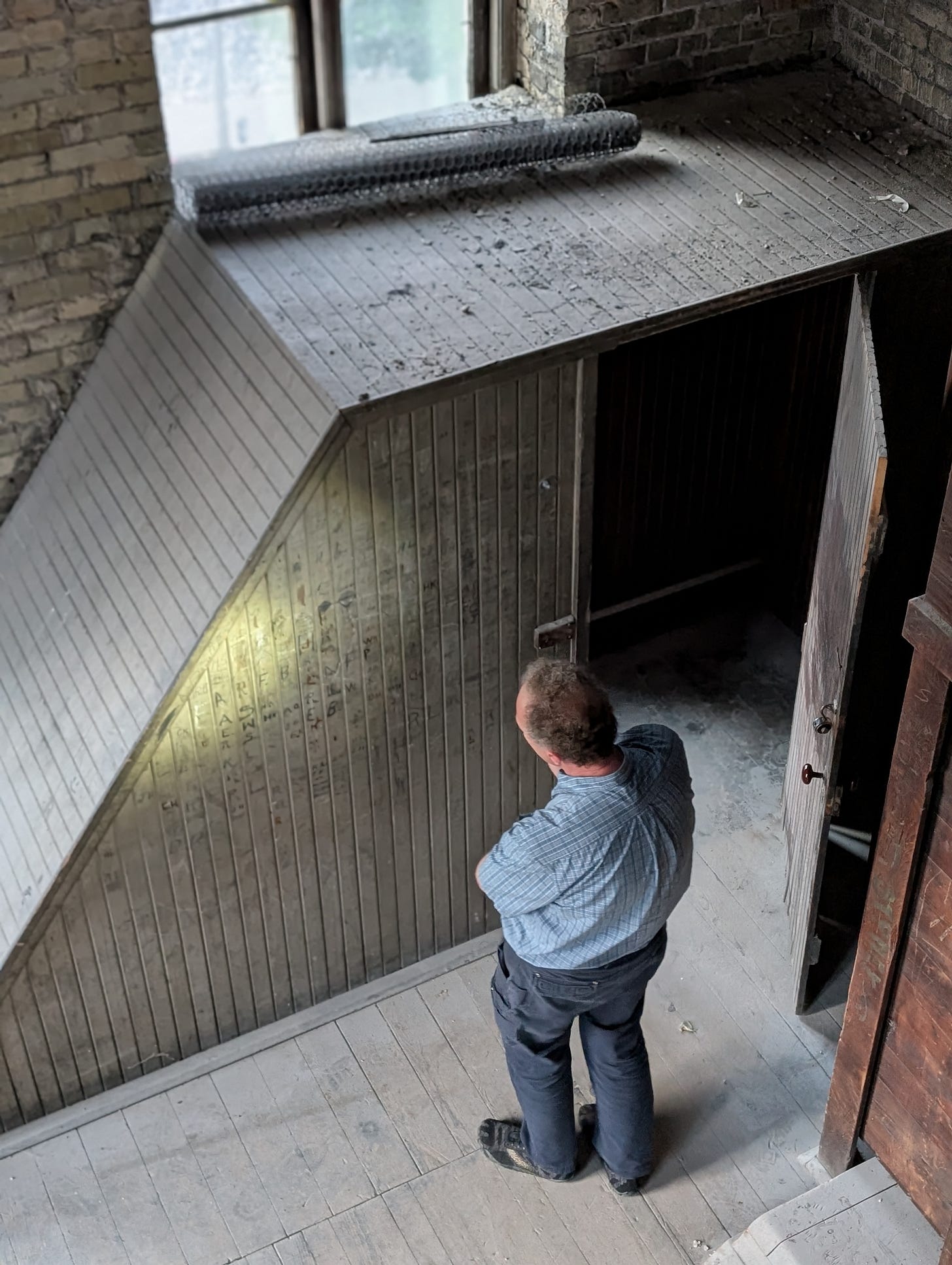
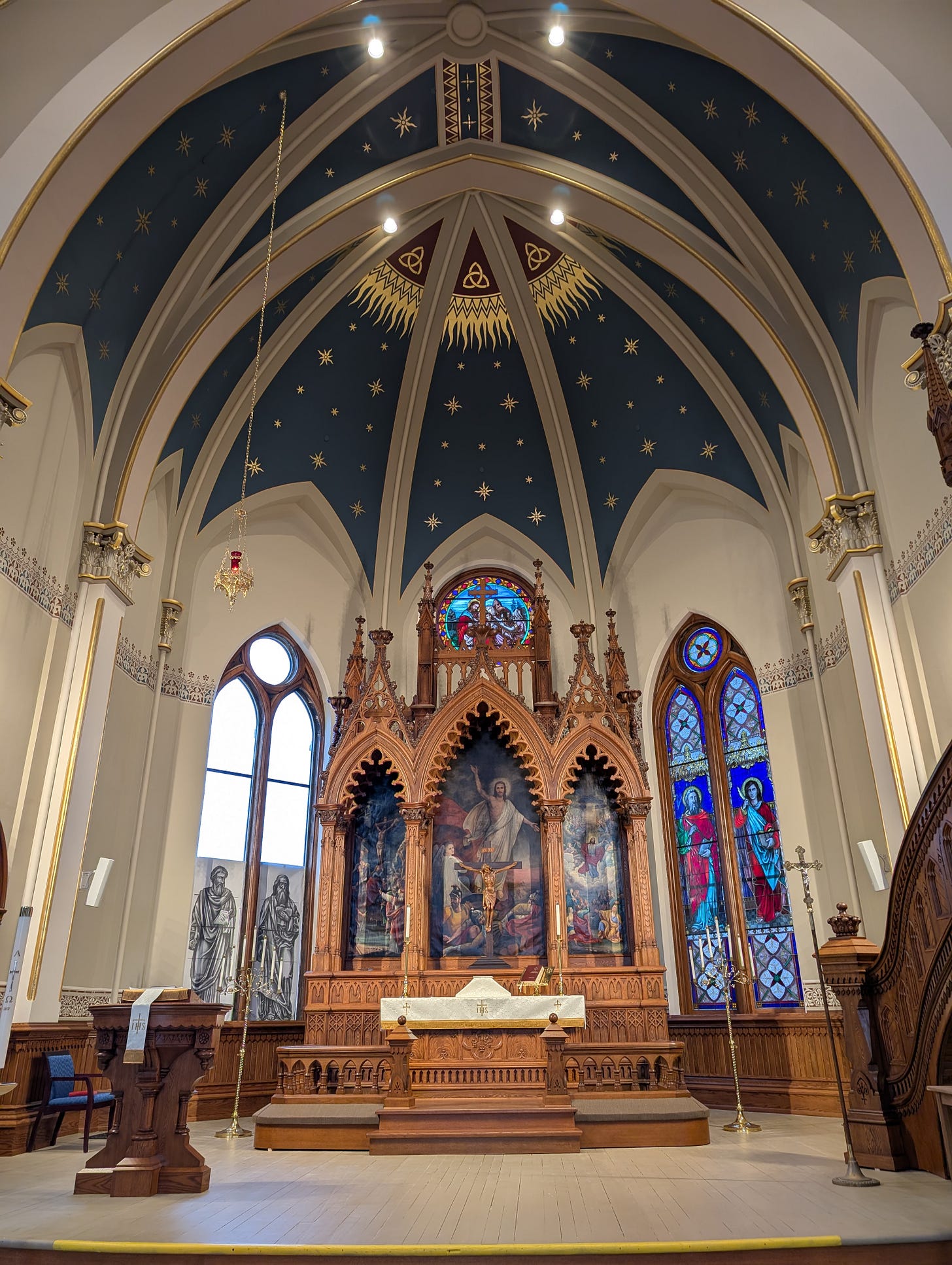

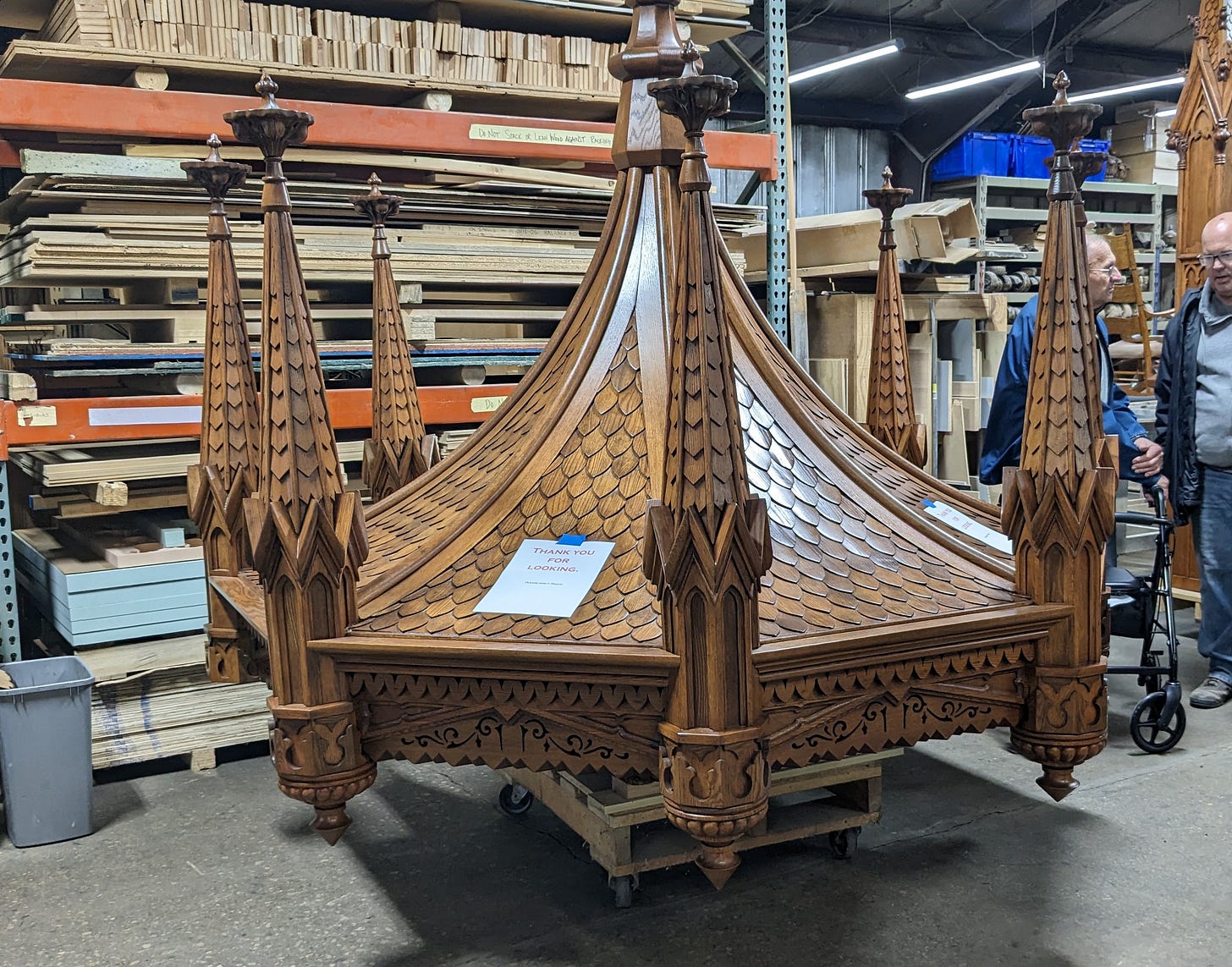
Gorgeous. So thankful that it still stands.
So beautiful Jenny. So glad you have this place in your life!